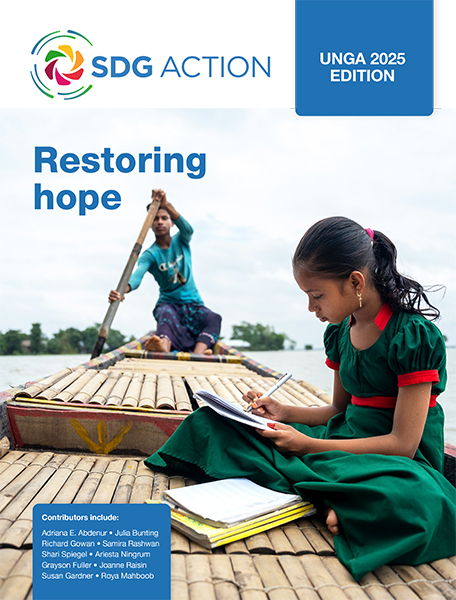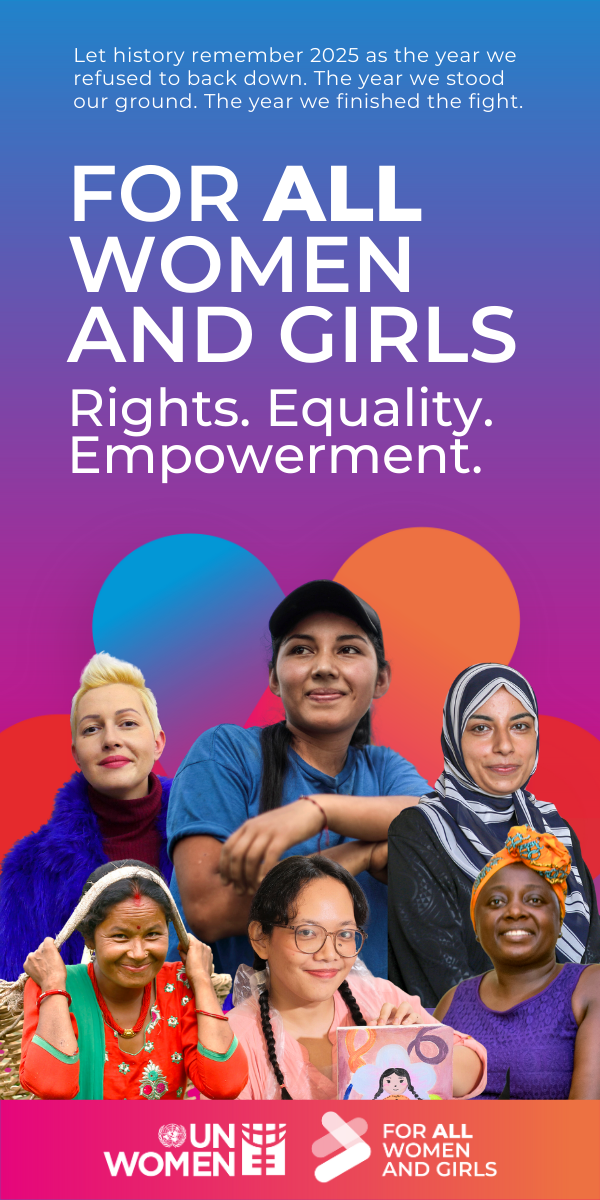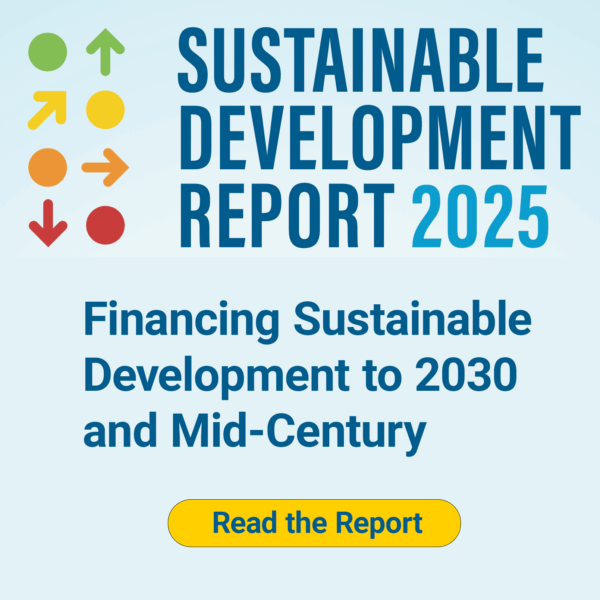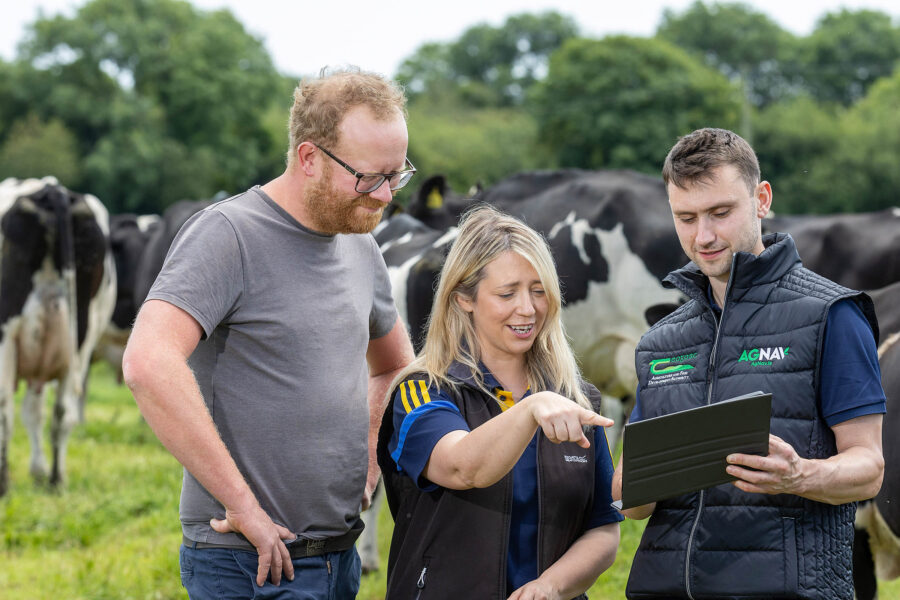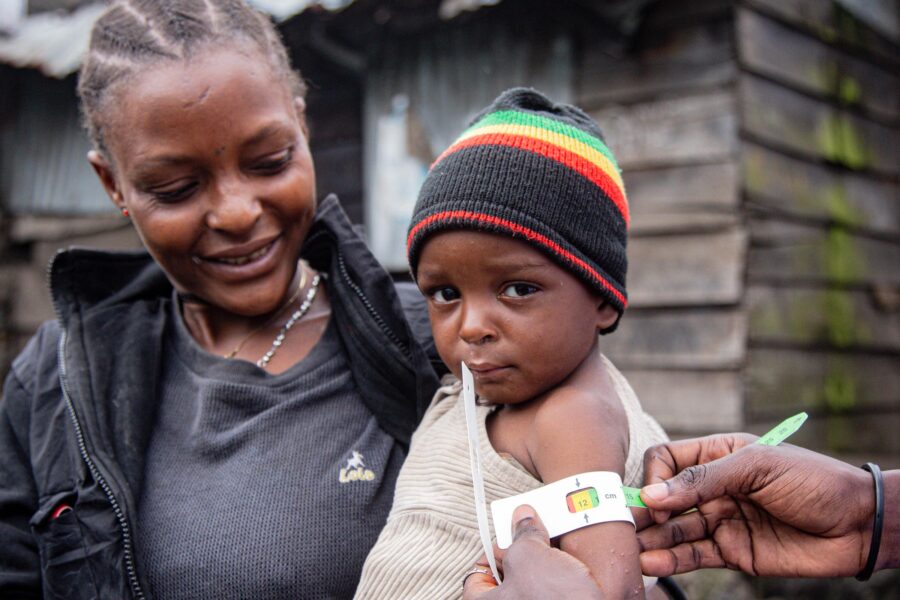Bridging the divide: using technology and AI to close the development gap
Digital innovation can drive progress toward the SDGs – yet the countries that stand to gain the most often face the highest barriers to adoption. We need a more inclusive model of technology transfer to close, not widen, the global development gap
Data and monitoring — Global
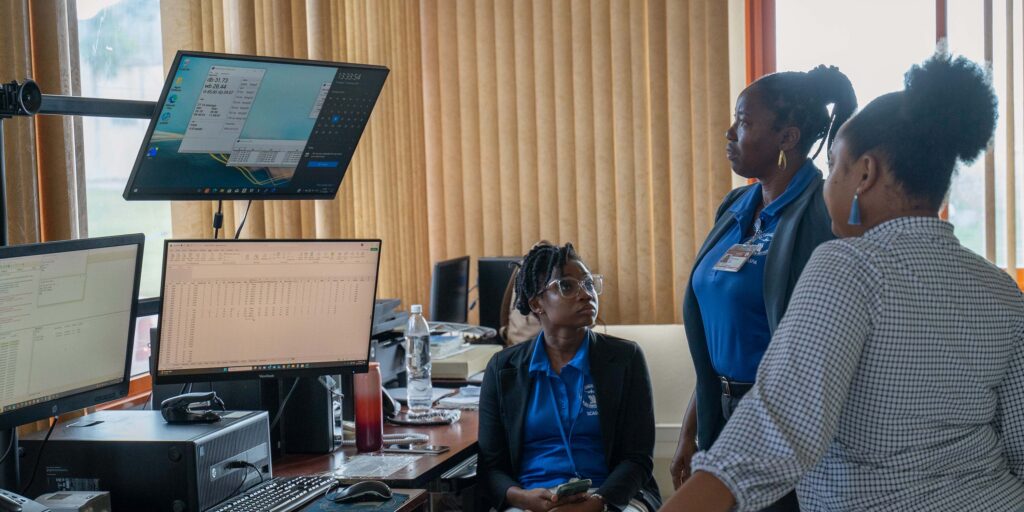
The promise of technology as a great equalizer between nations has long held global imagination. From agriculture driven by artificial intelligence (AI) to satellite-enabled health services, digital innovations offer tantalizing potential to transform economies and societies in the Global South.
But if technology is the answer, why does the development gap persist – and in some cases widen?
The short answer is that technology alone is never enough. Tools, no matter how advanced, cannot substitute for the systemic ingredients that underpin successful adoption: education, infrastructure, finance, human capital, and (above all) political will. The paradox is that the countries standing to benefit the most from transformative technologies are often the least equipped to absorb them at scale. This is where the conversation about technology transfer becomes urgent.
The mirage of “plug and play” progress
Talk of rapid tech deployment often assumes a “plug and play” model: innovations developed in the Global North seamlessly applied in the South. But development is not a software update. High-tech solutions parachuted into low-capacity contexts often fail, not because they are poorly designed, but because they are out of sync with local realities.
Take drone technology in agriculture. While drones can optimize crop monitoring, their utility hinges on stable internet, reliable electricity, skilled operators, and policies that regulate airspace. In much of sub-Saharan Africa, these preconditions are uneven at best.
Moreover, importing technology without domestic capacity-building risks entrenching dependency rather than fostering resilience. The challenge is not merely to disseminate technology, but to enable countries to adapt, govern, and eventually generate their own innovations.
Examples where we see technology such as AI making an enormous difference in the daily lives of vulnerable communities include processing large volumes of climate data. This can both predict hazards (saving lives) and help to fully understand climate risk (so that insurance companies feel more comfortable to provide coverage).
Digitized technology and AI can also be used to understand exactly when crops need to be watered (to ensure that water is not wasted) or analyze energy use and traffic patterns to avoid congestion (and therefore reduce pollution).
The list goes on, but here are three pilots that CTCN is supporting right now where technology is making a difference:
- blockchain technology for real-time climate risk insurance for farmers in Thailand
- real-time traffic information to reduce congestion in Dhaka, Bangladesh
- supporting efforts to boost climate resilience by enabling low-cost, real-time collection of rainfall and river level data via mobile reporting in Malawi – giving governments vital information for stronger early warning systems
What makes technology transfer work?
Effective technology transfer requires more than bilateral agreements or donor funding. In our work at the CTCN, we see technology transfers working when the following are in place:
1. Local engagement
The solution is requested by the community, and the community is truly invested.
We clearly see this in northern Nigeria, where we are supporting an aquaponics (water) project. In this area, farmers are being driven from their lands due to drought and violent, armed groups. The community relies almost completely on farming, so this project set up a greenhouse for vegetables using aquaponics technology in the middle of the village – so women in particular don’t have to walk to fields and risk being attacked.
The project has been so successful in terms of produce that the community is now asking to scale it up and add cooling facilities – so they can store their produce and sell it on the market, adding a revenue source. This is an example of a clear, demand-driven project which is also sustainable long term.
2. Human capital
Education is the foundation for progress. When we have the option of working with strong academic institutions and universities who act as champions of a technology, we see progress. When universities are centers of excellence, they can produce the human capital needed for a technology shift.
One example of this is a CTCN project in the Central African Republic to train students at the University of Bangui to design and manufacture solar thermal cookers. Currently, women and girls can spend hours collecting firewood, putting them at risk of violence. Families, meanwhile, rely on expensive and inefficient cooking fuels. The locally made solar ovens are helping to reduce the reliance on using unsustainable wood and charcoal, as well bringing tangible benefits in terms of health and economic opportunity.
For this to happen on a greater scale, countries must invest in STEM (science, technology, engineering, and mathematics) education, vocational training, and digital literacy – not just for the elite, but for the broader population. Without local engineers, technicians, and data analysts, technology becomes a foreign language.
3. Institutions
Our national counterparts are climate experts, called nationally designated entities (NDEs), who coordinate a country’s engagement on climate technology. These are essential in coordinating climate action in an effective way. In general, solid, transparent and accountable governance creates the enabling environment for innovation to flourish. Weak institutions mean weak enforcement of intellectual property rights, unstable regulatory frameworks, and limited incentives for private sector engagement or start-ups.
This is why, at CTCN, we support pilots that strengthen institutions, like one in Mozambique where we work to strengthen national systems of innovation for low carbon and climate resilient economic development, or working with the Mexico City government for an analysis of its circular economy strategy related to construction and demolition.
4. Infrastructure
Obviously, without electricity, internet, reliable data, and transport networks, any project is difficult, and scaling up digital technologies is challenging. For example, we support drought forecasting technology in Saint Kitts and Nevis, but this requires reliable internet not only to collect data but also to disseminate information to farmers about weather hazards. A cloud-based climate platform is only as effective as the mobile coverage it needs to transmit information in rural areas.
5. Financing mechanisms
Access to capital, particularly for local entrepreneurs, is essential. Microfinancing, blended finance, and public–private partnerships can help de-risk innovation in fragile markets.
At CTCN, we can only finance pilots up to USD 250,000, which is very small for what these countries need in terms of scaled-up technology investment. We all need to work hard to ensure that financial institutions – local and global – are ready to take investment risks in developing countries to support large-scale and high-risk technology projects.
6. Cultural and contextual alignment
Solutions must be tailored to the social and cultural norms of the communities they serve. Failure to localize leads to low uptake and mistrust.
At CTCN, all pilots we support start as country requests. We work closely with NDEs to identify priorities and opportunities for climate technology support. Through regular meetings, capacity-building events, and knowledge sharing with other countries, we brief stakeholders on the financing opportunities, and help them shape effective project proposals. A recent training, for example, focused on AI, to help our counterparts better understand how AI can support climate action.
The contested terrain of “leapfrogging”
One of the most persistent narratives in development discourse is the idea that low-income countries can “leapfrog” traditional stages of industrialization through digital innovation. There is some truth to this. Mobile banking in Kenya, off-grid solar in Bangladesh, and digital IDs in India show how countries can bypass legacy systems.
But leapfrogging is not the same as free-floating. Even mobile money, often held up as a leapfrogging success, required years of regulatory reform, public trust-building, and telecom investment.
Leapfrogging can also obscure deeper structural problems. A country may have an app to report an impending climate hazard, but no resources to evacuate or protect people. The temptation to digitize dysfunction – to build shiny tools atop broken systems – is real. But it’s not development.
The politics of technology transfer
Technology transfer is not merely a technical transaction – it is political. The flow of innovations from North to South is shaped by issues of power, ownership, and control. In addition, AI requires enormous volumes of electricity for processing plants – many of which are placed in developing countries, which barely have enough electricity to keep the lights on in poor communities.
The UN has called for a Global Digital Compact to ensure that technology benefits all of humanity, not just a few. Achieving this will require rebalancing incentives, loosening monopolies, and foregrounding the agency of recipient countries. It also means redefining success – not in terms of hardware deployed, but in capabilities built.
So what now? Toward inclusive innovation
If we are serious about narrowing the development gap through technology, we must prioritize inclusive innovation. That means:
- supporting locally led solutions requested by local partners that support capacity-building and retain and reward excellence
- identifying sustainable funding for high-risk and innovative technology investments, which help sustain projects and deploy technologies over the longer term. As the world races toward the deadline for achieving the 2030 Sustainable Development Goals, the pressure to scale up successful technologies is mounting – but seed funding is still missing
- measuring success by long-term impact, not short-term metrics
- ensuring ethical use, particularly in areas such as AI and surveillance
- facilitating South–South cooperation, where countries share solutions tailored to similar contexts, whether within or across continents
Above all, we must acknowledge that technology is not destiny. It is a tool – a powerful one – but its effectiveness depends on the hands that wield it and the systems that support it. Bridging the development divide is not just about transferring tools. It is about transferring trust, knowledge, and control.
In the end, the goal is not a world where everyone uses the same technologies, but one where every country can choose, adapt, and build the tools it needs to thrive. That is a future worth investing in.
Other CTCN projects to support developing countries
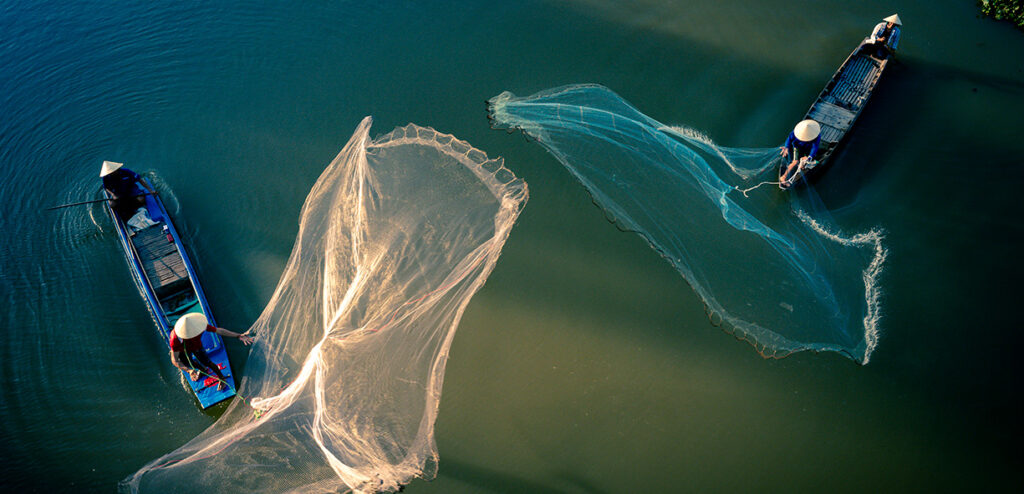
In coastal areas of Panama, CTCN is helping the country to develop a high-resolution marine dynamics database, applying advanced data techniques, including machine learning, to assess coastal vulnerability to sea-level rise and flooding. The data will support risk assessments, guide adaptation planning, and help inform vulnerable coastal communities.
In Tunisia, CTCN supported a feasibility study on integrating AI into smart agriculture to help farmers respond to changing climate conditions, in particular helping farmers better understand the use of biosolids to broaden the adoption of anaerobic digestion technologies.
In Vietnam, management of transboundary water resources is key, and CTCN supports improved data availability and accuracy of river levels for water resource planning, including advanced technologies to monitor and forecast transboundary water flow into Vietnam from China.
Featured in:
UNGA 2025 edition: Restoring hope
An effective multilateral response is needed for an ever increasing number of crises. At the same time, the UN – the heart of the multilateral system for 80 years – is under attack from nations trying to defund and disempower it. Radical reform is clearly needed. Whatever form that takes, it should be guided by and designed to support the SDGs.
This edition considers the impacts of inequality and conflict, and explores ways to build a fairer, safer future through education, technology, economic development and global partnerships.
Authors include Adriana E. Abdenur, Julia Bunting, Richard Gowan, Samira Rashwan, Shari Spiegel, Ariesta Ningrum, Grayson Fuller, Joanne Raisin, Susan Gardner and Roya Mahboob.
Publication date: 22 September 2025

